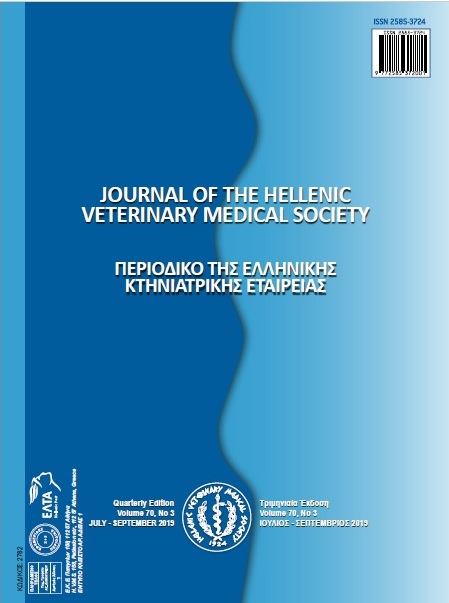Comparison of Lidocaine-Xylazine and Procaine-Xylazine for Lumbar Epidural Anesthesia in Cattle

Abstract
Lumbar epidural anesthesia is commonly utilized in veterinary medicine for diagnostic, obstetrical, and surgical intervention in the abdominal and perineal regions of large animals. The aim of this study was to directly compare the time to onset and duration of epidural anesthesia produced by lidocaine-xylazine and procaine-xylazine combinations to that produced by xylazine alone in cattle. A total of 24 healthy adult Holstein dairy cows were included in this study. The time to onset and duration of anesthesia were recorded. The heart rate, respiratory rate, and rectal temperature were recorded at 0 minute and at 10, 20, 30, 60, and 90 minutes after the epidural administration of each treatment. The time to onset of anesthesia did not significantly differ between the xylazine only group and the lidocaine-xylazine and procaine-xylazine combination groups. The duration of anesthesia in the xylazine only group was significantly shorter than that in the lidocaine-xylazine and procaine-xylazine combination groups (p < 0.05). Ataxia was not observed in any group. The heart rate, respiratory rate, and rectal temperature values in all the treatment groups throughout the study did not significantly differ from those at baseline. We found that administration of procaine hydrochloride in combination with xylazine hydrochloride, an α2-adrenergic receptor agonist, offers the same time to onset and duration of anesthesia as does epidural anesthesia using a combination of lidocaine hydrochloride and xylazine hydrochloride. Furthermore, this combination of treatments did not cause adverse effects in the cardiovascular and respiratory systems. These findings indicate that combined administration of procaine and xylazine is an economic and useful approach for epidural anesthesia.
Article Details
- How to Cite
-
SATO, R., KANAI, E., & TSUKAMOTO, A. (2019). Comparison of Lidocaine-Xylazine and Procaine-Xylazine for Lumbar Epidural Anesthesia in Cattle. Journal of the Hellenic Veterinary Medical Society, 70(3), 1727–1732. https://doi.org/10.12681/jhvms.21802
- Issue
- Vol. 70 No. 3 (2019)
- Section
- Research Articles

This work is licensed under a Creative Commons Attribution-NonCommercial 4.0 International License.
Authors who publish with this journal agree to the following terms:
· Authors retain copyright and grant the journal right of first publication with the work simultaneously licensed under a Creative Commons Attribution Non-Commercial License that allows others to share the work with an acknowledgement of the work's authorship and initial publication in this journal.
· Authors are able to enter into separate, additional contractual arrangements for the non-exclusive distribution of the journal's published version of the work (e.g. post it to an institutional repository or publish it in a book), with an acknowledgement of its initial publication in this journal.
· Authors are permitted and encouraged to post their work online (preferably in institutional repositories or on their website) prior to and during the submission process, as it can lead to productive exchanges, as well as earlier and greater citation of published work.


